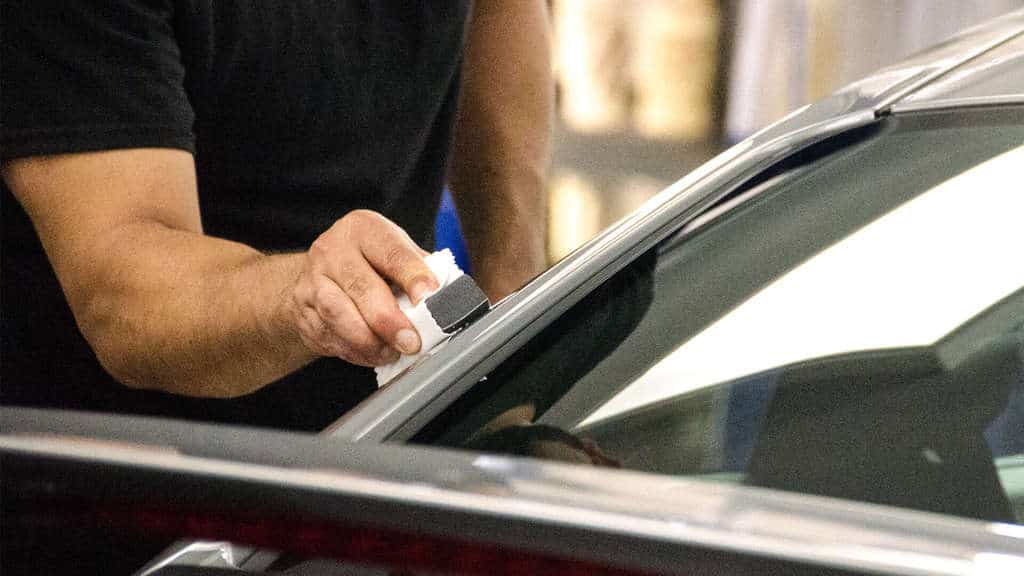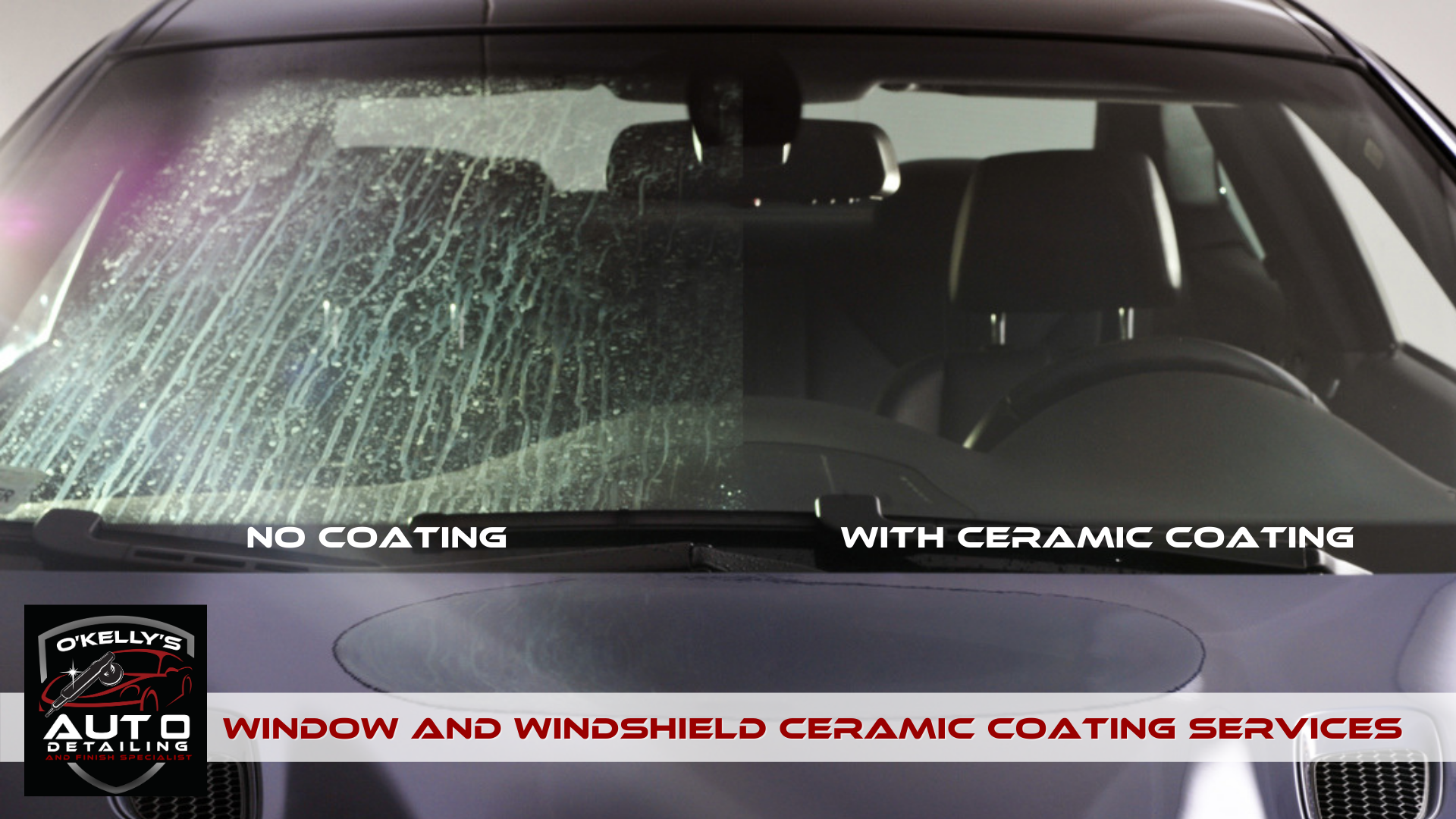Vital Upkeep Tips After Applying Ceramic Coating to Your Car
Vital Upkeep Tips After Applying Ceramic Coating to Your Car
Blog Article
The Duty of Ceramic Covering in Shielding Your Automobile's Paint From Environmental Damages
Ceramic finishing has become a sophisticated solution for vehicle proprietors looking for to preserve the stability of their vehicle's exterior. By developing a durable chemical bond with the paint, this innovative modern technology supplies a powerful barrier against numerous ecological risks, such as UV rays, acid rainfall, and impurities. However, comprehending the detailed benefits and the complexities of the application process is necessary for optimizing its effectiveness. As we discover the subtleties of ceramic coating, it becomes obvious that the option to implement this safety measure might considerably affect your vehicle's longevity and aesthetic.
What Is Ceramic Covering?
Ceramic covering is a sophisticated fluid polymer put on the external surface areas of a vehicle, made to supply a durable layer of protection for the paint. This cutting-edge option forms a chemical bond with the lorry's factory paint, developing a resilient and hydrophobic guard. The finishing consists of nanoparticles that fill out the tiny flaws in the paint, leading to a smooth surface that boosts gloss and beam.
Normally, ceramic coatings are available in numerous solutions, enabling different levels of security and durability. While some products can last for numerous months, others use protection for numerous years, depending upon the thickness of the application and environmental elements. The application procedure requires thorough prep work, including cleaning, decontaminating, and brightening the automobile's surface to guarantee ideal bond of the finish.

Benefits of Ceramic Finishing
One of the key advantages of applying a ceramic covering is the exceptional defense it uses to automobile paint. This advanced layer creates a resilient layer that shields the automobile's surface area from a selection of ecological threats, consisting of UV rays, acid rainfall, bird droppings, and tree sap. By supplying this durable defense, ceramic finishes substantially reduce the threat of fading and etching, preserving the vehicle's aesthetic allure with time.
In enhancement to security, ceramic coatings are renowned for their hydrophobic buildings, which ward off water and dust, making it much easier to maintain a clean lorry. This self-cleaning impact minimizes the frequency of washing, conserving both time and resources. Moreover, ceramic coverings boost the depth of the paint's gloss, leading to a vivid and refined appearance that boosts the overall appearance of the lorry.
Another significant advantage is the longevity of ceramic finishes. Unlike traditional waxes or sealants that need constant reapplication, ceramic coverings can last a number of years, using a cost-efficient solution for automobile proprietors looking for long-term protection. In general, purchasing ceramic layer leads to improved durability, reduced maintenance, and continual aesthetic charm for vehicle paint.
How Ceramic Finishing Functions
A ceramic finish runs through a chemical bonding procedure that develops a protective layer on pop over to these guys the car's paint surface area. This innovative service makes use of advanced nanotechnology, where microscopic fragments of silica are put on hold in a fluid form - ceramic coating. Upon application, these fragments bond with the factory paint, forming a sturdy and hydrophobic layer that enhances the lorry's surface area
The major part of ceramic coatings, silicon dioxide (SiO2), contributes to the covering's toughness and strength. When cured, the coating changes right into a hard, glass-like surface that shields the paint from ecological pollutants such as dirt, UV rays, bird droppings, and tree sap. This molecular bond leads to a surface area that is not just immune to scratches yet also less complicated to clean up, as dust and crud are less likely to adhere.
Additionally, the hydrophobic buildings of ceramic coatings create water to grain and slide off, lowering the possibilities of water places and mineral down payments. This protective obstacle effectively lengthens the life of the paint and maintains the car's aesthetic appeal, offering auto owners a lasting remedy for paint protection.
Application Process of Ceramic Finishing
When taking into consideration the application of ceramic layer, preparation is key to accomplishing optimal results. Any kind of scratches or blemishes should be resolved at this stage, as the coating will bond with the surface area underneath.

Ceramic covering is then applied in little sections, normally using an applicator pad. The vehicle should be left to treat in a controlled setting to enable the covering to totally bond with the paint.
Long-Term Upkeep and Treatment
Achieving an effective ceramic covering application establishes the foundation for lasting protection, however appropriate maintenance is look at this site essential to maintaining its advantages. Regular cleaning is vital; using a pH-neutral car hair shampoo will help maintain the finish's honesty without creating damages. Avoid automated vehicle washes that use rough materials, as they can endanger the coating's surface area.

Moreover, using a ceramic layer upkeep spray can boost the existing layer, providing an added boost in protection and shine. It's recommended to execute this every three to 6 months, depending upon ecological exposure.
Last but not least, auto parking in shaded areas or making use of vehicle covers can avoid extended direct exposure to harmful UV rays and environmental contaminants, better expanding the life of your ceramic layer. By sticking to these maintenance practices, you can ensure your automobile's coating their website continues to be secured and visually appealing for many years to come.
Conclusion
In recap, ceramic covering functions as an important protective action for vehicle paint, successfully securing lorries from a variety of environmental dangers. Its ability to develop a durable hydrophobic barrier not just enhances aesthetic charm yet likewise dramatically lowers the frequency and intensity of upkeep required. The resilient nature of this innovative polymer emphasizes its worth in preserving lorry stability and appearance, ultimately adding to a much more sturdy and visually appealing auto surface.
Ceramic finishing is a sophisticated fluid polymer used to the outside surface areas of a vehicle, made to give a sturdy layer of defense for the paint. Ceramic finishings boost the depth of the paint's gloss, resulting in a sleek and lively look that boosts the overall look of the lorry.
A ceramic covering operates through a chemical bonding process that produces a safety layer on the car's paint surface area.The main component of ceramic coverings, silicon dioxide (SiO2), adds to the layer's strength and durability.In summary, ceramic covering offers as a vital safety measure for auto paint, properly shielding automobiles from a variety of environmental hazards.
Report this page